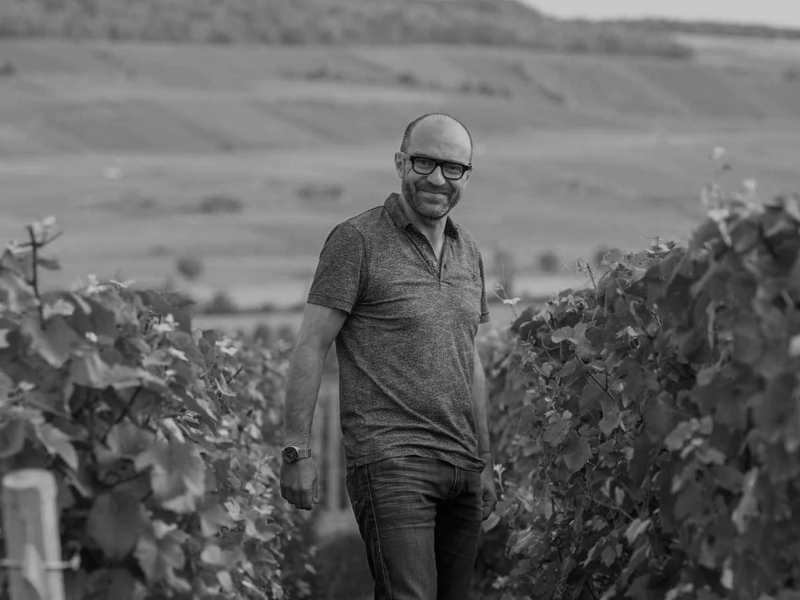Dehours
Region: Vallée de la Marne
Premier Cru Sites: Mareuil-le-Port, Oeuilly, Cerseuil and Troissy
Total Vineyard Holdings: 14.5 hectares
Annual Production: 7,500 cases
Vines: 70% Meunier, 20% Chardonnay, 10% Pinot Noir
Dehours (Mareuil-le-Port)
Jérôme Dehours farms 42 different vineyards in three distinct villages on the southern side of the Marne River. Jérôme’s 14.5 hectares are split between the villages of Mareuil-le-Port, Oeuilly, Cerseuil and Troissy, in this quiet corner of the Marne. This area is just south of the Marne river at Châtillon-sur-Marne and Cuisles, where Cédric Moussé produces his exquisite wines. This area, the Vallée de Flagot, is named for the small river which has carved out a winding valley called Le Flagot, to meet the Marne River. Geologically, the soils are quite different than the Grand Vallée around Aÿ, the Montagne de Reims and the Côte des Blancs. Here you find different strata of clays over Marne deposit, which is limestone, and not the belemnite chalk you’re likely to find in the northern Côte des Blancs, for example. Limestone is a sedimentary rock made up of two major types of minerals – calcite and aragonite, which when combined form calcium carbonate. Chalk is a form of limestone that includes a higher proportion of calcite. Both are formed from the skeletal deposits of marine organisms; chalk is made up microorganisms and limestone is generally from larger organisms.
Dehours was founded by Jérôme’s grandfather Ludovic in 1930. It was Jérôme’s father Robert who developed the estate and began a new activity of trading in grapes. Jérôme knew that he wanted to be a grower, studying first in Beaune and then at the viticultural school in Avize. Tragically, his father Robert passed away suddenly at the age of 50, in 1987. Jérôme was just 21 years old and was not ready to take on the responsibility of the domaine. “It was necessary to find partners, so the family decided to join a financial group. This association was dictating how the land was farmed and was not in the way that I wanted. I had to figure out how to free myself from these shackles and take back my land. But there was a contract.” It was not until 1996 that Jérôme was able to extricate himself from this contract. It took five years of selling fruit, keeping small amounts for himself to make wines, to invest, buy equipment, and slowly expand the holdings. In 2007, Jérôme was still selling half of his production to the négociants. Today, he sells 1/3rd of his production.
Jérôme uses three Coquard presses at the domaine, giving him flexibility at harvest, pressing parcels separately and allowing very strict control at pressing. Non-vintage wines are vinified in tank, while the single-vineyard expressions are produced in barrel. For many years malolactic was blocked here, but ten years ago he started to think about malolactic and the addition of SO2 that it required.




